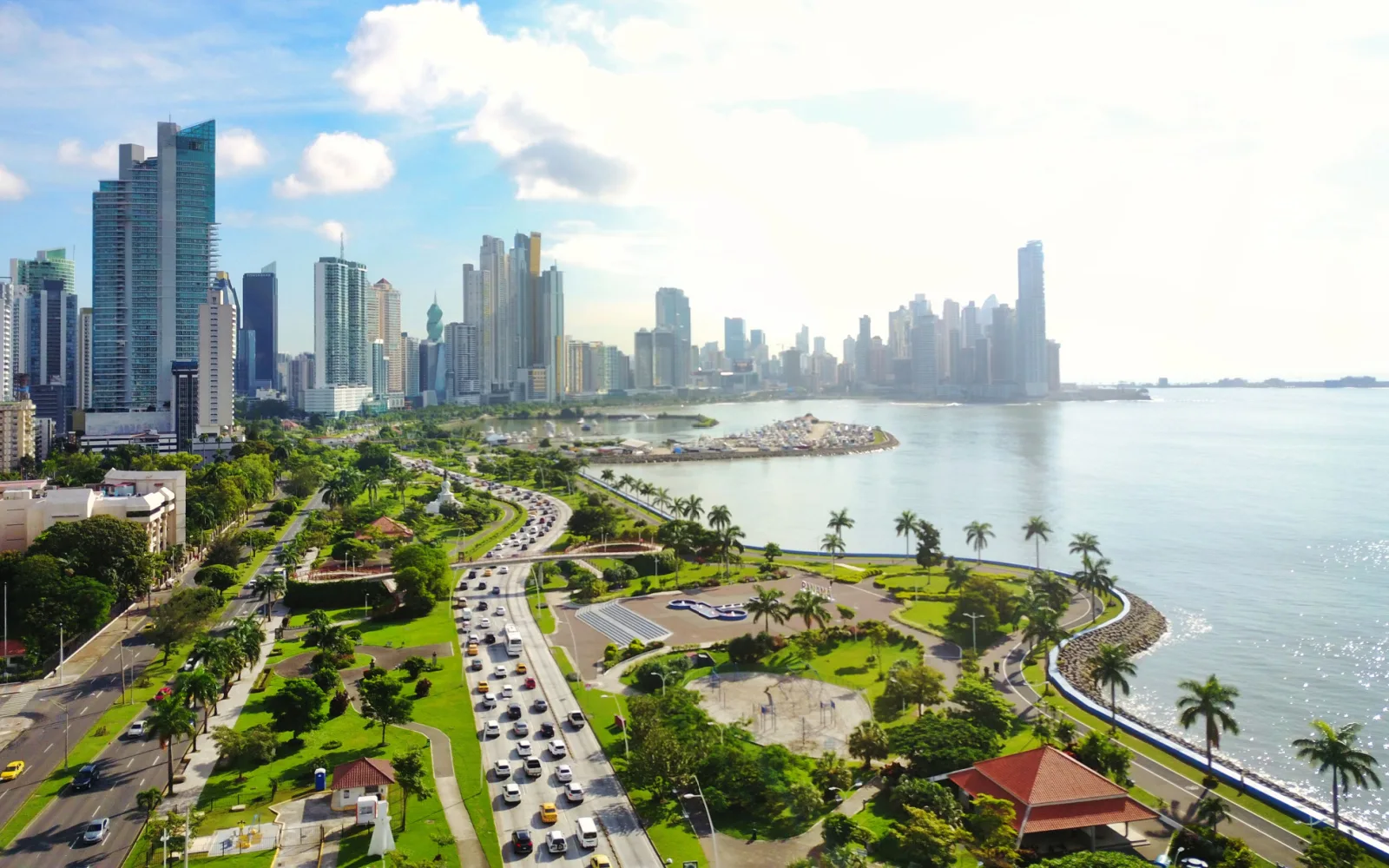Panama is a relatively popular Central American tourist destination, with over 2 million people visit the country each year. Most people visit this storied country for its stunning natural landscapes.
From the tropical Bocas del Toro islands in the tranquil Caribbean Sea to the rugged Pacific Coast, including the Pearl Islands, Panama has something to offer from coast to coast.
Inland, visitors to can explore the jungle, trek through the highlands around Boquete, and explore the streets of historic Casco Viejo. Of course, everyone has to visit the engineering marvel of the Panama Canal when they visit the country.
It also has a lot to offer nature lovers, and it is a popular stop on the backpacking circuit through Central America. But while there’s countless things to do, is Panama safe to visit? Here’s our take.
Is Panama Safe to Visit in 2025?
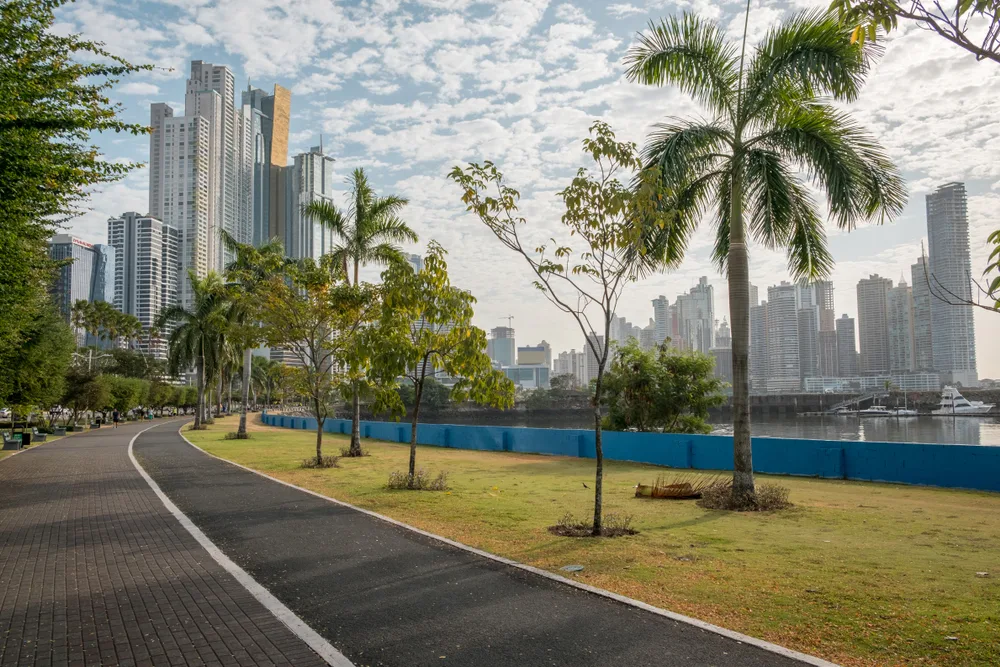
Hanohiki/Shutterstock
Yes, sort of. The country has a fairly high crime rate and growing civil unrest. However, savvy travelers who know which areas to avoid and don’t make themselves into targets can visit safely, and millions of people do so each year.
Most countries advise some degree of caution when visiting Panama. The New Zealand government advises its citizens to exercise increased caution and avoid some regions altogether.
The United States also places the country under a Level Two travel advisory and some parts of the country under a Level Four travel advisory due to the even higher risks of crime.
Common problems that affect Panama include:
- Protests and demonstrations
- Petty theft
- Robbery
- Assault
- Sexual assault
- Drug trafficking
While most severe incidents of crime affect residents primarily, tourists have been caught up in violent crime before. Criminals often target foreigners for crimes against property because they know tourists are potentially more lucrative targets than poorer Panamanians.
It’s important to stay alert as you move around the country. Besides crime, civil unrest is a risk. The official Panama tourist site warns about potential demonstrations and roadblocks around the country, including those affecting major roads such as the Pan-American Highway.
Protests have been ongoing for weeks and even months as local environmental activists, especially indigenous groups, protest mining in the jungle.
Violence is likely to escalate in future protests after two protesters were killed at the beginning of November and after the police announced they would crack down further on future blockades.
Follow the news to see if any protests or blockades are announced near the area you are visiting, and adjust your travel plans accordingly. Avoid getting caught up in a protest as, at best, it will inconvenience your day, and at worst, you may get caught up in a violent conflict.
In Panama, you should also be mindful of the risk of natural disasters, especially if you are planning any treks or excursions into nature. According to the World Bank, Panama is at high risk for several types of natural disasters, including:
- Tropical cyclones and hurricanes
- Tsunamis
- Flooding
- Landslides
- Earthquakes
The rainy season and cyclone season in Panama peak around October and November. Avoid visiting during this time as the risk of tropical storms and flooding is much higher.
Plus, the heavy rain means it is impossible to travel through more remote parts of the country due to the mud. No matter what time you visit Panama, make sure that you follow the news to stay on top of any alerts. Follow the advice of authorities if you need to shelter or evacuate.
Ready to Book?
Unlock Exclusive Discounts on Expedia.com!
Got Travel Insurance?
Protect yourself for unexpected interruptions.
Compare Plans We may be compensated when you book after clicking on one of our links.Crime in Panama
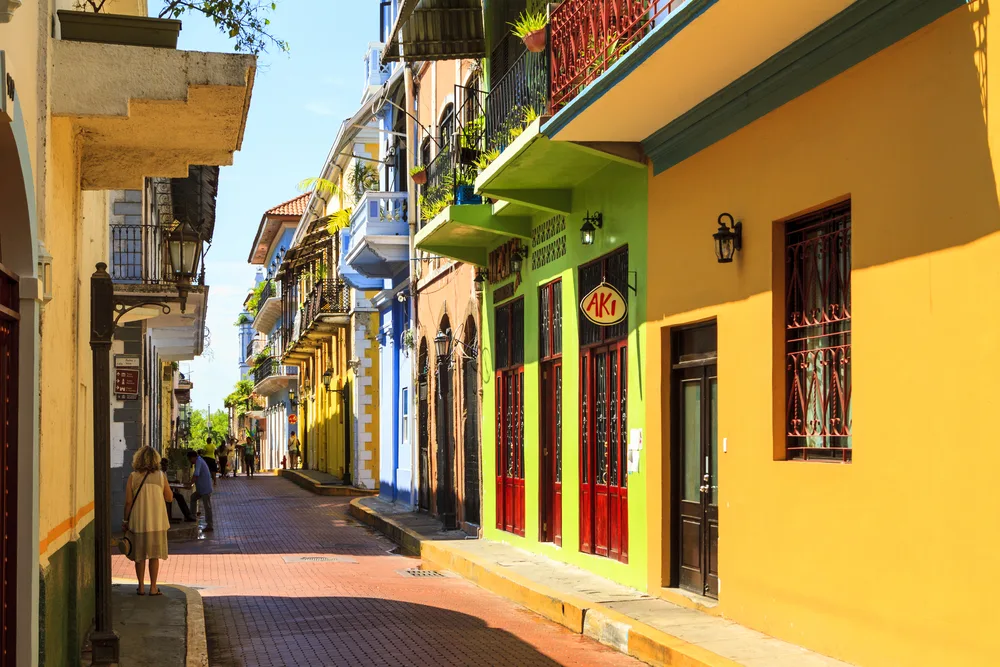
PANAMA CITY, PANAMA, 21 10 2015. Old buildings in the old part of Panama City, The city of Panama was founded on August 15, 1519 by Spanish conquistador/GTS Productions/Shutterstock
Panama has an elevated crime rate. In fact, its crime rate is so high that most countries warn about the risk of crime in their travel advisories for the country. Most concerning is the high violent crime rate.
According to data from the World Bank, Panama has a homicide rate of 12.73 incidents per 100,000 people. This is much higher than the global average, making it one of the more dangerous countries in the world.
However, by the standards of Central America, this homicide rate is fairly moderate. And as a tourist, you don’t have to worry much about being the victim of a homicide.
According to data from the Panamanian National Police, homicide rates are highest where gangs are the strongest. Most murders are tied to gang activity. Gangs target members of rival gangs or people who have crossed them for homicides.
They are unlikely to target tourists, especially because that would likely attract unwanted law enforcement attention. Gangs also tend to be strongest in poorer parts of the country or capital city, where tourists are unlikely to venture.
It is still possible to get caught in the crossfire of a gang fight, like many civilians, but unlikely. The worrying aspect of the high homicide rate is that it means the rates of other violent crimes are also high. Other violent crimes, such as assault and armed robbery, are likely to affect visitors to Panama.
The robbery rate is a whopping 242.8 incidents per 100,000 people. Other non-violent property crimes, such as theft, are also common. Tourists are often targeted for these crimes.
The government of Panama has taken steps in recent years to address the crime rate. There is a dedicated anti-gang task force, as gangs are the main drivers of crime in the country, and the homicide rate has declined somewhat.
However, fighting crime is an uphill battle, and anecdotal reports of some types of crime, such as assault, have increased.
When visiting the country, you certainly should be alert to the risk of crime and take precautions such as researching which neighborhoods to avoid and not flashing your valuables.
However, you shouldn’t listen to stereotypes when making your decisions, just reliable information. Panama is not the gun-slinging destination dangerous to tourists that some people believe it to be, and most violent incidents affect locals, not tourists.
Armed Robbery
The violent crime tourists are most at risk of is armed robbery. According to the Australian government’s travel advisory for Panama, tourists have been victims of armed robberies before, and robbers sometimes operate around popular visitor destinations such as Casco Viejo and Chagre National Park.
Robbers also target people using ATMs. One common form of robbery is the express kidnapping, when someone is forced to drain their bank account at an ATM at gunpoint, sometimes going to several ATMs to get around the withdrawal limit.
Make sure you only use secure ATMs, such as those inside banks, and never withdraw money at night. The good news is that armed robbery is far less common than non-violent petty theft and can be avoided with the right precautions.
Certain neighborhoods of Panama City have a much higher robbery rate than others, so make sure that you avoid dangerous neighborhoods.
Avoid behaviors that single you out as a potentially easy target, such as walking alone at night, wearing expensive accessories, or carrying lots of cash. Try to do your best to blend in with locals or with other visitors. If possible, travel in groups when you explore local cities.
Petty Theft
In most places around the world, petty theft is the most common crime and the one that is most likely to affect tourists. Panama is no different.
Several countries, including the United Kingdom and Canada, mention the risk of pickpocketing and other forms of theft affecting visitors. Tourists are often affected (and even targeted) for this type of crime.
Pickpocketing is common around places where tourists tend to congregate, such as bus stops, inter-city transportation hubs, popular tourist sites such as the Casco Viejo/Old Town, and shopping malls.
To prevent pickpocketing, make sure that you always put your valuables in a safe place. Don’t put your wallet or passport someplace where someone can easily slip it out of your pocket.
Better yet, leave your passport in your hotel safe, as well as your spare cash and cards, and only carry around necessary cash for the day and a copy of your ID. That way, the damage from any theft will be minimal.
Break-ins targeting hotel rooms, rental cars, and vacation homes are common. Make sure that you always lock your doors and place valuables in a safe. Opt to stay in places that take additional security precautions, such as guards.
Burglars will sometimes use deception to try to enter your place of residence, so never let anyone into your rental home, as they may be selling you false pretenses.
Avoiding Bad Areas
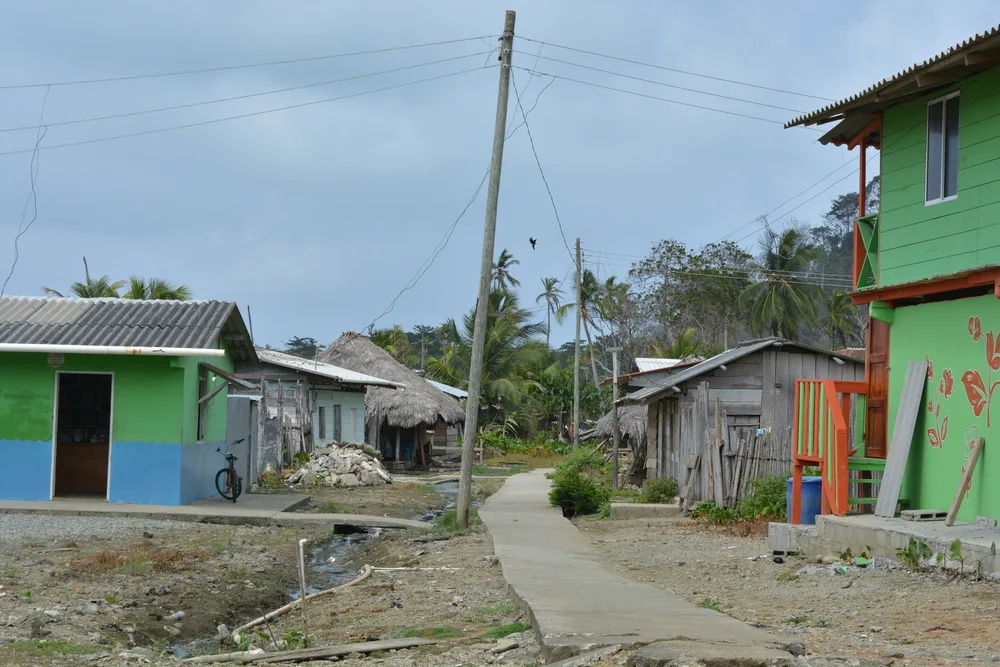
Mundosemfim/Shutterstock
Certain parts of Panama are more dangerous than others. Make sure that you avoid these areas for your own safety. Avoid the Darien Gap and other parts of the Darien region due to high levels of trafficking activity, including armed guerrillas.
This is considered to be one of the most dangerous regions in the world. You should also avoid the Mosquito Gulf, a region of the northern Caribbean coast, due to the high levels of trafficking activity. Since this region is so remote, law enforcement has limited capacity to help you if you get in trouble.
Parts of Panama City are also dangerous due to their elevated crime rates, including:
- Calidonia
- El Chorillo
- Rio Bajo
- Ancón
- Curundú
- San Miguelito
- 24 de Diciembre
- Santa Ana
- Juan Díaz
Ask locals for advice on where it is safe to wander while in Panama City. Pickpocketing risks are higher in popular tourist areas such as Casco Viejo, so keep a close eye on your valuables there.
Things to Consider
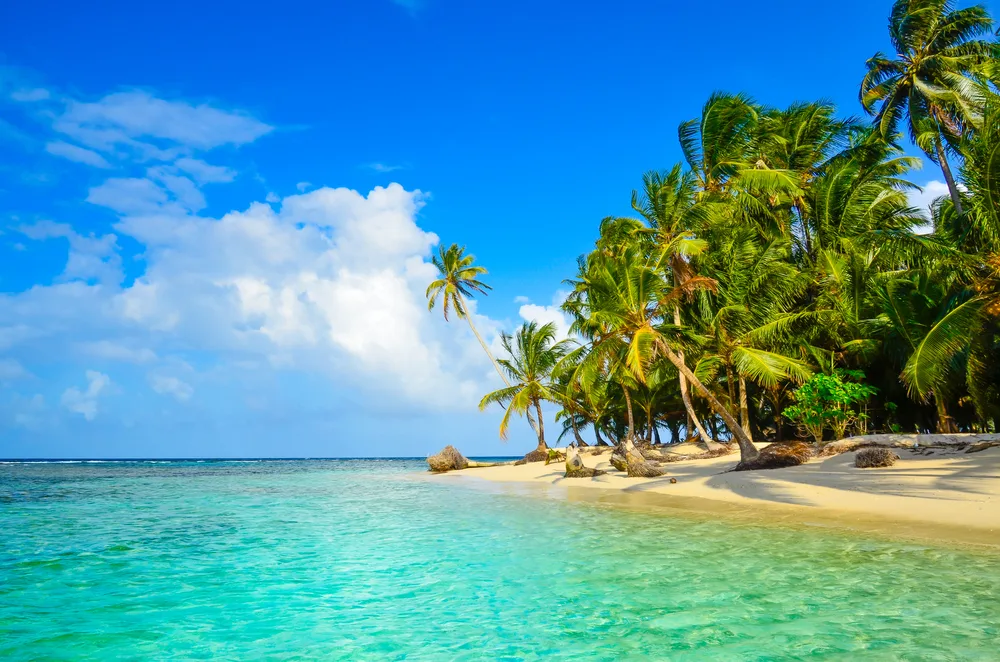
Simon Dannhauer/Shutterstock
Here are a few additional safety tips for visiting Panama:
- Female travelers should take additional precautions in Panama. There have been sexual assaults against visitors, including in popular resort areas. Avoid walking alone at night, always lock your hotel room, and don’t tell strangers where you are staying.
- Be careful when swimming. Lifeguards aren’t very common, but strong currents and riptides are. Stay close to the shore, always go with at least one other person so they can call for help, and check with locals if conditions are safe before entering the water.
- Avoid driving at night. Road conditions are poor, and dangerous driving is sadly common. Roadside robberies are also more frequent at night.
- Research tour operators before booking. This is especially important for adventure travel when you want to make sure that the tour operator you are going with is following the right safety procedures. Never go to remote areas or try dangerous activities alone.
Frequently Asked Questions
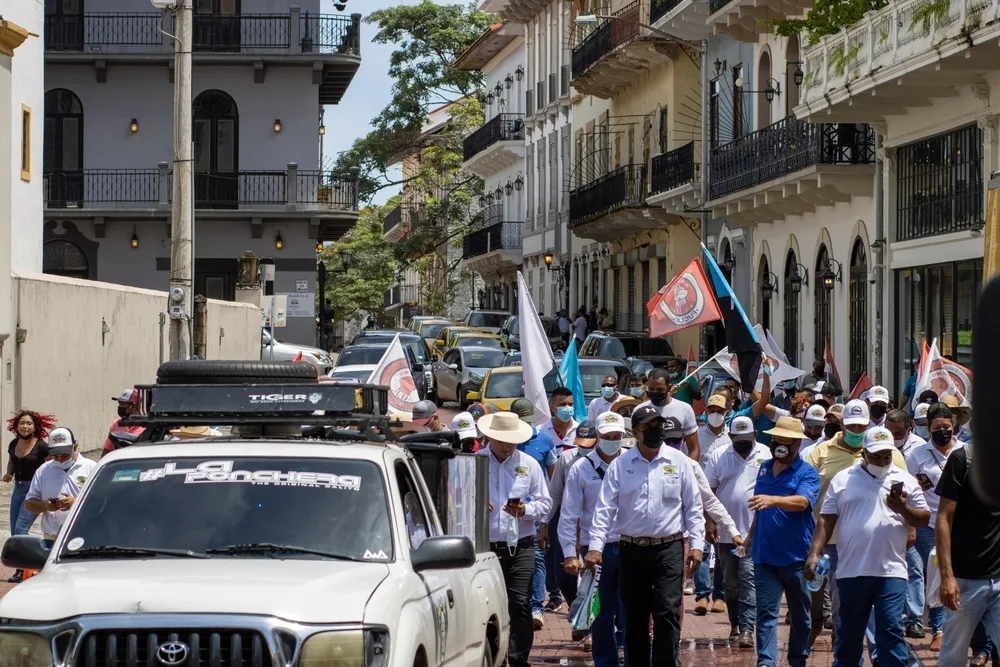
PANAMA CITY, PANAMA – OCTOBER 18, 2021: FUCLAT Protest in Casco Viejo, Panama/IanLaubscher/Shutterstock
Here are some common questions people ask about safety before visiting Panama:
Is Panama safe for tourists in 2023?
Panama is still safe for tourists in 2023, although the crime rate is as high as it’s always been. However, visitors in 2023 will have to contend with sometimes-violent protests, which, in the past, were not usually common in this stable country.
Is Panama or Costa Rica safer?
Costa Rica is definitely safer than Panama, and the right choice for visitors who want to visit Central America but are concerned about safety. It has the lowest crime rate in the region.
Is it safe to travel to Panama City now?
It is safe to travel to Panama City now, but you should take some precautions. Some areas of the city have very high crime rates and should be avoided. There is also a risk of demonstrations in the city.
Is Panama City good for tourists?
As long as you stick to the safe areas of the city, Panama City is good for tourists. It has a lot of attractions and amenities to offer.
Is Panama safer than Mexico?
Mexico may be more popular among tourists, but Panama is actually safer. It has a lower crime rate and more responsive law enforcement.
Should You Take a Trip to Panama?
Despite the challenges, it is possible to visit Panama safely. You just need to avoid areas where armed conflict and protests are likely and use sensible precautions to protect your valuables.



